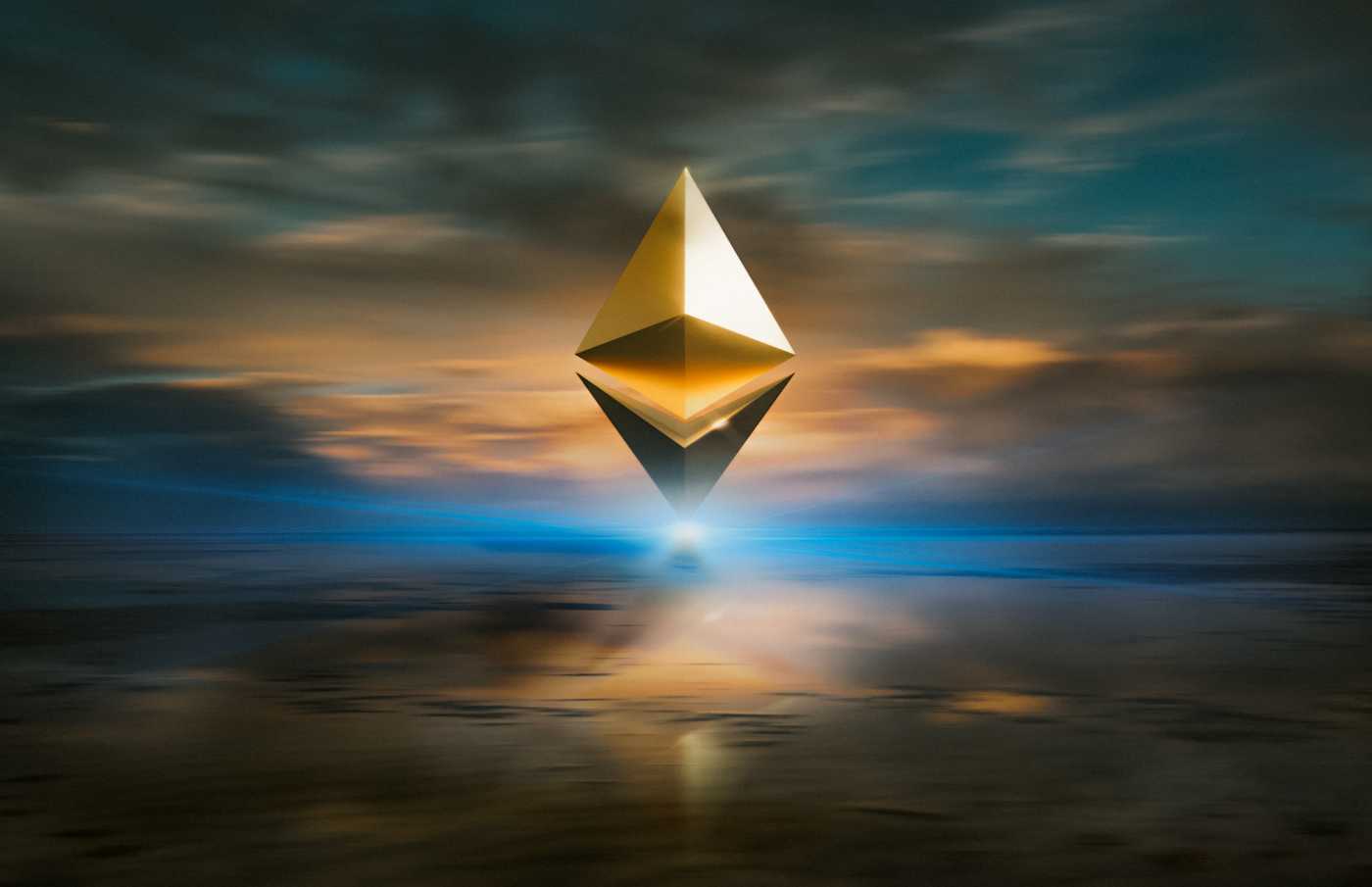All those crazy NFTs sales, from Beeple to Grimes and famous memes, happened on the Ethereum blockchain.
So, you cannot help but wonder – could it have happened on other blockchains similar to Ethereum?
In fact, are all NFTs on ETH? Are there any ETH Alternatives?
The answers to these questions are more complex than Yes-or-No. Yes, there are alternatives, but are they developed enough, and are there NFT platforms based on these alternatives?
In this article, we’ll go through the current limitations of the Ethereum blockchain when it comes to NFTs, its upcoming improvements, and some of the most promising alternatives to Ethereum-based platforms.
But let’s start with a short story.
Are all NFTs on ETH? – The “Burnt Bansky” Case
Somewhen in March this year, a group that called themselves “Burnt Banksy” burnt the physical copy of an artwork that they had sold for $400,000 on OpenSea.

They made the headlines that day trying to make a point.
First and foremost, they wanted to show the world that a physical piece can be destroyed without any effect on its value, given it has an associated NFT. Actually, the NFT version of the painting went up in value following their stunt!
However, there was another point to that destruction. The group is now building its own NFT auction platform. It is called Burnt Finance, and no, it not on Ethereum, but on the Solana blockchain protocol.
We’ll discuss some Ethereum NFT alternatives later. Let’s take a closer look at Ethereum now.
What Exactly Is The Problem with Ethereum for NFTs?
The Ethereum realm is quite overloaded. This leads to increasingly more significant gas fees, and it also reflects in the cost of the transaction.
You cannot sell artwork for $15 if it costs you $70 to tokenize it, right?
What is more, Ethereum transactions are taking longer than usual.
It’s almost as if this poor Ethereum chap is suffering from its own success.
The idea behind Ethereum, as it was first launched in 2015, was to allow developers to build and manage apps on an open-source, decentralized software realm where there’s no Google or Apple to say what you can or cannot do.
Then the NFTs exploded 💣.
Boom, Ethereum skyrocketed into the stratosphere.
However, each NFT transaction takes a “sacrifice” in computing power. These computers run on electricity, and electricity is being made through….well, not-so-ecological means at the moment.
It has been rumored that the whole Bitcoin network consumes as much energy as the entire country of Argentina, as an example.
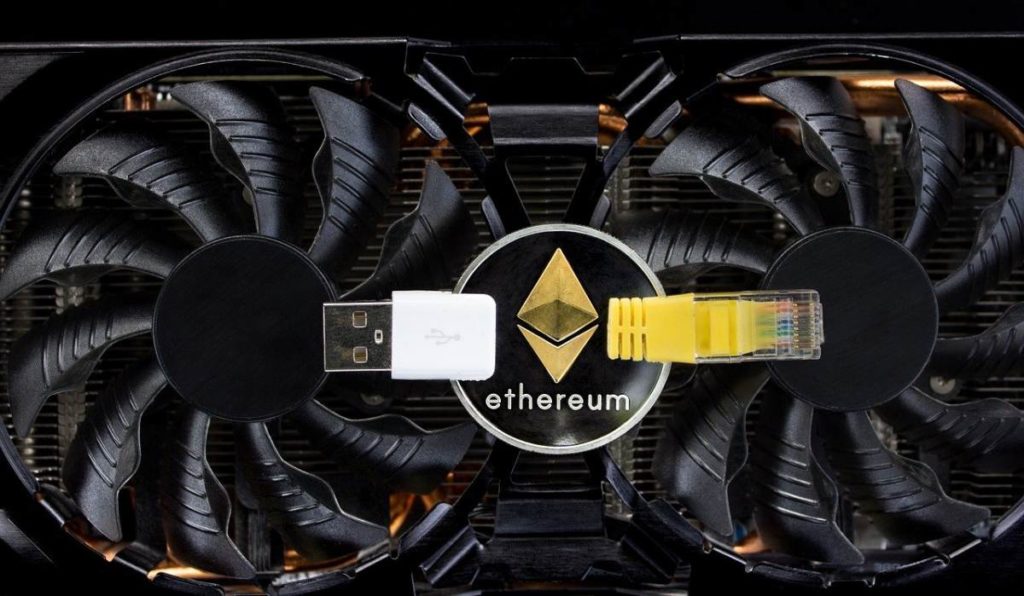
Improvements in Sight, Captain!
At the moment, both Ethereum and Bitcoin are based on a Proof-of-Work protocol. This protocol allows blockchains to be invulnerable to any hacking attacks, but it also drains them of energy.
If you wanted to hack a blockchain transaction, you would need computing power that is equivalent to the entire blockchain network. Can you hide that in your backyard? I doubt it.
But proof-of-work is also environmentally disastrous.
So, Ethereum is looking to ditch the proof-of-work protocol and replace it with something else; something better?!

Welcome ETH 2.0 and Proof of Stake
Ethereum will “soon” switch to Proof-of-Stake transactions.
This should cut Ethereum’s energy consumption by… a lot.
With a PoS Ethereum (Proof of Stake), you won’t need computational power for a transaction. You will need validators. Validators are randomly chosen by the system based on their wallets. They will stake a certain amount of coins to validate your transaction.
This sounds like trouble for miners, we know. But that would fix most problems ETH is facing (especially since most of its competitors are already using PoS).
However, the PoS future for Etehreum is still in debate.
Technically, there are more than 100,000 validators waiting now, on the blockchain, with a combined stake of about 3.4 million ETH. But ETH2 was initially supposed to be released in November 2020 and it keeps being delayed to ensure the network’s security.
A transition from PoW to PoS happens to be more difficult than expected, but we have faith.
What Are some NFT Ethereum Alternatives
With all the craziness following the NFTs, it is only natural to look for Ethereum alternatives. Why put all your eggs in the same basket, right?
Here are 6 of the most promising ETH alternatives (in no particular order).
Solana (SOL)
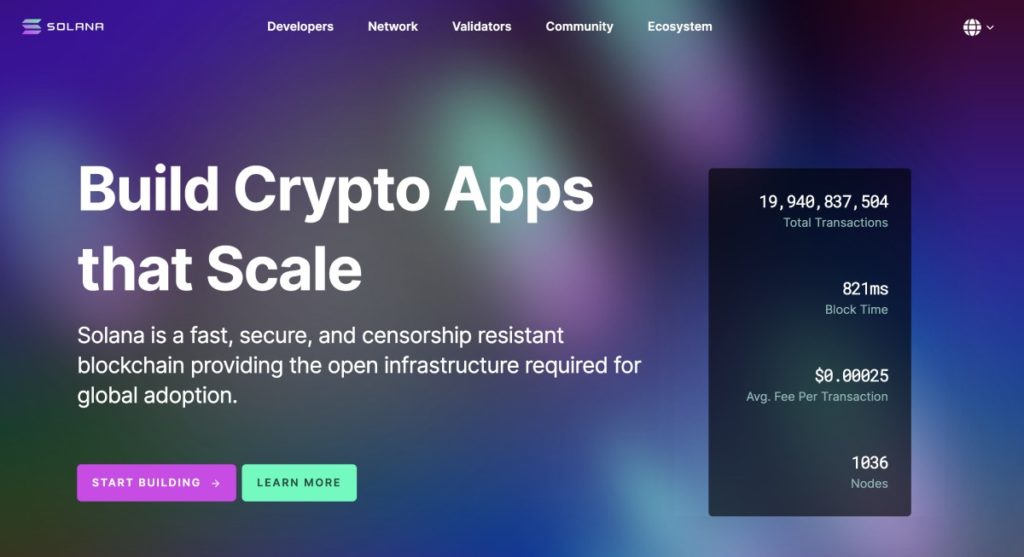
Let’s start the Solana Crypto Startup that we were talking about above. Apparently, it can handle more than 50,000 transactions per second. By comparison, Ethereum does 20 per second. So, it’s arguably faster and some call it “the fastest blockchain in the world”
They have launched the Solible NFT marketplace. You can trade items here using tokens such as USDC, FRONT, or SRM. Unfortunately, the marketplace is not as populated as we’d like; there’s not much to spend crypto on.
However, one thing we love is that on Solible, you will find real items sold with digital certificates, such as t-shirts, socks, or even a Doge coin painting. After purchase, the physical copies are delivered right to your door.
So, yes, this is a new type of NFT marketplace – one where you can also redeem the physical copy of the digital certificate you’re buying. Will we see more redeemable NFT marketplaces in the future? Who knows…
Tezos (XTZ)

OpenSea has announced that they will add Tezos to their marketplace in the near future. That sounds good.
Tezos is a PoS (proof-of-stake) blockchain network that allows P2P transactions using its native cryptocurrency – XTZ (Tezzie). It is a serious competitor to Ethereum, as it raised $232 million at its first ICO. It is in the top 20 biggest cryptocurrencies on the market at the moment.
As for NFTs trading on XTZ, you should check out Kalamint. They’re still in Beta, but they’re shaping up nicely. You can also join their Telegram and Discord groups of discussion, to find your way around.
The Wax Blockchain
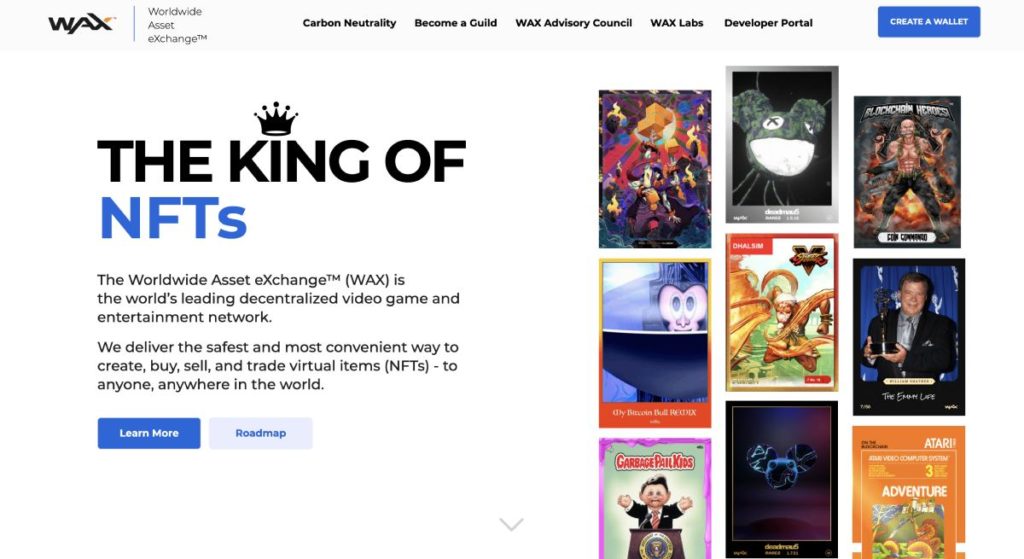
The Worldwide Asset eXchange Blockchain is mostly an NFT platform for video games and other forms of entertainment. It uses the WAX Cloud Wallet for transactions. However, WAX is still linking their NFTs to Ethereum in what they claim is a combination of two blockchains.
They have a few tokens you can trade with. However, you can convert them using Ethereum as a bridge.
HIVE

The NFT Showroom marketplace is built on the Hive blockchain. They advertise it as a “fast and feeless blockchain” with a scalable ecosystem for artists and collectors alike.
You can browse through their gallery and monitor their activity. However, we advise a fair amount of research before you jump right into it.
Polkadot (DOT)
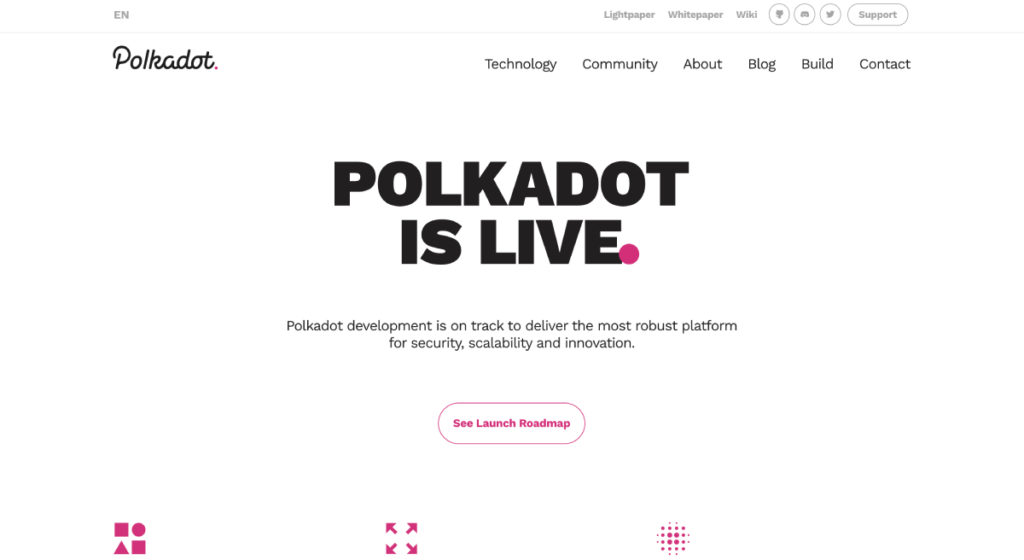
Dubbed as the “Ethereum killer”, this Swiss blockchain is gaining traction in the crypto market. It has been developed by the Web3 Foundation team, led by an ex-Ethereum CTO and it has been trading since March last year.
It functions as a protocol for protocols. If Ethereum is a huge amphitheater where you have to pay gas fees to get yourself a room, on Polkadot you don’t pay any GAS fees, you just build yourself another amphitheater for your software.
Polkadot is currently used mostly by developers. However, there are a few rising NFT marketplaces looking at DOT. One is Polkally.
This marketplace is actually compatible with a series of blockchains. Based on IPFS, it will transact on Ethereum, then Polkadot, Tron, EOS, and Binance Smart Chain. At the moment, you can only join by e-mail. Another Polkadot NFT marketplace is KodaDot – not very populated, but a start if you’re looking at ETH alternatives for NFT.
Cardano (ADA)

This blockchain initiative was built from scratch in 2015 by a group of people, even ex-Ethereum developers. It functions on the ADA assets.
There is also an NFT marketplace that works on Cardano. It is called Lovada. Currently, it is under development, and all you can do is subscribe to their newsletter to stay tuned. If you’re an artist, you can fill in one of their artist applications.
Are you in Need of a Conclusion?
The answer to your question is yes, there are other Ethereum alternatives to NFTs. However, they’re pretty niched at the moment. You’ll need a bit more research. You can do that, or you can wait to see what the ETH 2.0 might bring.
Your call.
However, whatever you do, make sure you know what you’re doing before getting involved with NFTs.

